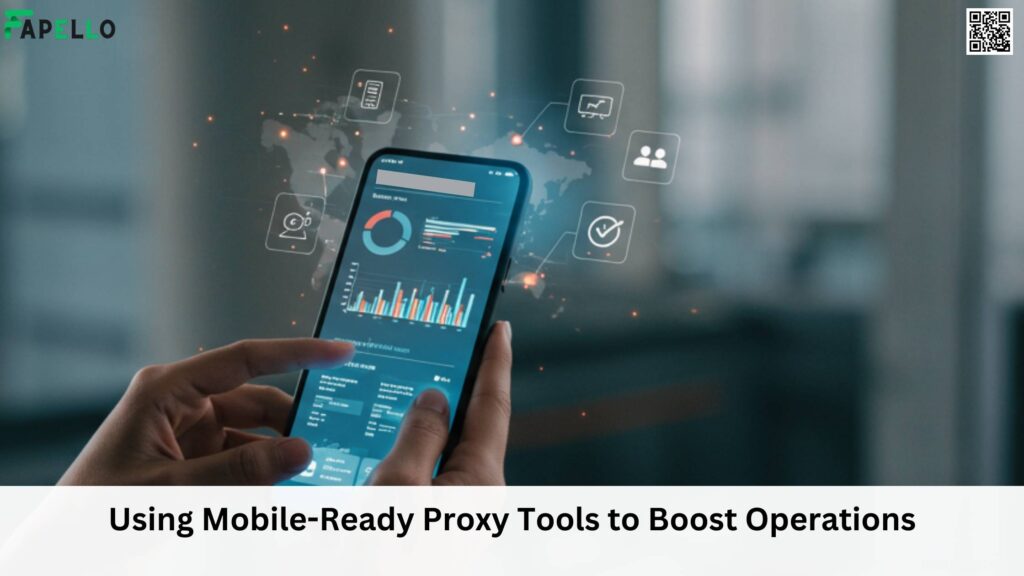Access defines performance. Not the ceremonial kind with passwords or permissions, but raw, real-time access to markets, systems, and user behaviors. Traditional proxy tools simulate presence. Mobile-ready proxies deliver it. They do not imitate mobile experiences. They inhabit them.
These proxies route traffic through real mobile devices using real SIM cards on real networks. The result is authenticity that even the most aggressive anti-bot defenses can’t distinguish from ordinary user activity. Companies that operate on instinct are fading. Those who operate on intelligence win. Mobile proxies offer that intelligence.

Testing Apps in Real Conditions
Mobile application testing on emulators yields partial truths. What works on a simulated Android phone may collapse on a 4G device in Accra with throttled bandwidth. Test environments without network noise or latency provide comfort, not clarity.
Mobile-ready proxies replace assumptions with data. Teams can test login behavior, content delivery, or notification systems as if they were end users in real environments. Every network introduces unique conditions. These proxies let you see how your product performs within them.
They also expose bugs tied to carrier configurations, language defaults, or signal fluctuation. When companies skip this realism, they risk deploying software that fails where users need it most.
Advertising Without Blind Spots
Digital advertising bleeds money through unseen cracks. Impressions get miscounted. Clicks come from bots. Campaigns appear where they shouldn’t and fail to show where they should.
With mobile proxies, marketing teams take the viewer’s seat. They confirm ad placement directly. They check whether creatives load as intended, whether targeting aligns with demographics, and whether views come from real, valid traffic.
The value here isn’t only in fraud detection. Rather, it is in truth. You no longer rely on reports but see what the user sees. That’s how you learn whether an ad is wasted or working.
Reaching the Right Geography
Markets are not global. They are local, and mobile users live inside regional ecosystems shaped by carriers, laws, and cultural expectations. Testing services for each geography demands more than switching IP addresses.
Mobile-ready proxies assign your session to a physical region and carrier. This allows full, accurate localization testing. Does your app display the right language variant in rural India? Does a user in São Paulo face a login timeout? These are not theoretical questions.
Regulatory compliance also rides on geography. Many countries now enforce strict data presentation and access rules. Testing locally through mobile proxies helps avoid costly violations.
Scraping Data with Subtlety
Competitor intelligence requires scraping. So does price monitoring, sentiment analysis, and product benchmarking. To explore effective methods, check for more on how mobile-ready proxies make data collection invisible and scalable. All the same, most scraping efforts today fail not from flawed logic, but from detection.
Websites block bots using fingerprints. The IP address is the first signal. Mobile-ready proxies disguise that signal. They cycle through real mobile IPs that rotate naturally, mimic human behavior, and distribute traffic across many endpoints. This kind of access allows companies to monitor app-exclusive offers, extract local pricing variations, or collect social media content restricted to mobile users. The data becomes cleaner. The method stays invisible.
Securing Systems Through Simulation
Security frameworks only work when tested against real threats. Internal audits alone don’t expose how phishing attacks behave, how fraudulent clicks slip through, or how credential stuffing operations mimic mobile logins.
By simulating these behaviors through mobile-ready proxies, security teams can safely trigger alerts, study responses, and adapt countermeasures. This includes testing risk scoring algorithms, firewalls, and behavioral analytics.
Maintaining Ad Integrity
The mobile ad ecosystem has grown opaque. Third-party vendors distribute creatives across dozens of platforms with little traceability. This leads to wasted spend, inflated metrics, and brand misplacement.
Verification requires visibility. Mobile proxies give brands that visibility. They reveal where ads actually appear, whether they are tampered with, and how users interact with them.
Deploying the Tools
These proxies scale to fit the user. Manual testers can install apps or browser plugins to route traffic through mobile networks. Data engineers can integrate APIs into automated scraping or testing pipelines.
Enterprise teams often rely on full dashboards, managing thousands of sessions by location, carrier, or connection type. Every configuration serves one goal: access. Whether to insight, validation, or control.
Cost, Ethics, and Stability
Not every use case justifies the cost. Mobile-ready proxies carry overhead. Providers maintain thousands of devices, SIM cards, and subscriptions. That cost passes to the user.
Ethical use also matters. Scraping, testing, or verification through mobile IPs must comply with laws and platform policies. Transparency isn’t optional. Nor is consent.
Connection speeds vary by region and time. Unlike wired connections, mobile networks fluctuate. What you gain in realism, you trade in consistency. But most real-world operations already live with that trade-off. It reflects the user’s world.
The Future Moves on Mobile
Every year, more activity shifts to mobile platforms. More purchases, searches, opportunities, and unfortunately, more fraud. Businesses that refuse to meet users there will lose to those that do. Mobile-ready proxy tools aren’t a workaround. They are a bridge, connecting data strategy to lived experience.






